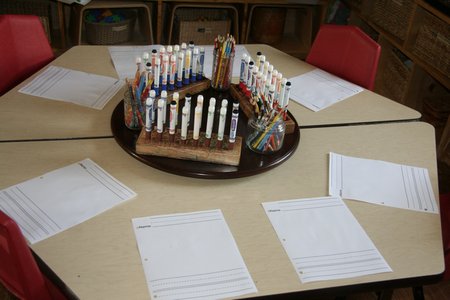
Today’s blog is my day to share a passion of mine…teaching children to read through journal writing. Traditionally, reading is taught by asking children to memorize letters and attach sounds to these letters. Then, children are asked to read by “sounding” out the words. I have found this to be backwards and fraught with frustration and failure for both the kids and adults. My great success in teaching reading has been through journaling with children. Wee Friends teaches children to write first, then read. When children write first, learning to read becomes a beautiful journey that is exciting and rewarding for everyone involved.
Wee Friends makes journaling a regular and important part of our curriculum because:
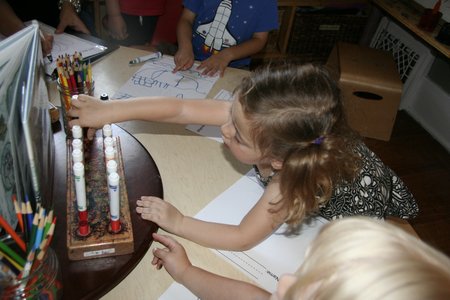
Children have an opportunity to express thoughts, feelings, and words onto paper for others to see and read.
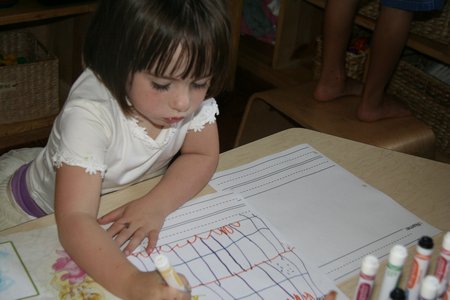
Children learn to value writing, and to respect the writing of others.
We often go into our journal time following a small group story time. We talk about the authors role in the story and connect how the children are “telling” their own story. Children talk with us about what they have written and they share with each other their stories. They learn that everyone’s picture has value.
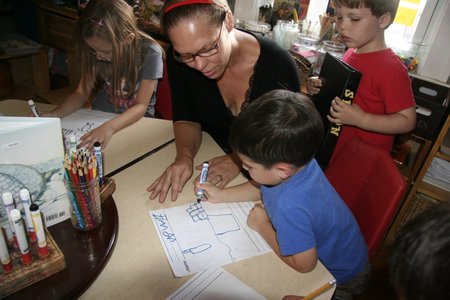
Children have REAL and RELEVANT opportunities to learn the conventions of print such as; each letter has a sound (or many sounds) and words are made up of these individual sounds combined; print goes from left to right; and print goes from the top to the bottom of a page.
We can show a child the letter B a hundred times and it won’t stick. However, if the child is excited about a story that was read about a bear, came to the table and journaled about a bear, wanted to write about their bear, the letter B now has meaning. It is at that “teachable moment” a Wee Friend teacher is ready to supply the information that the child’s brain is hungry and ready to receive. This emotional connection will guarantee that the letter B is now learned.
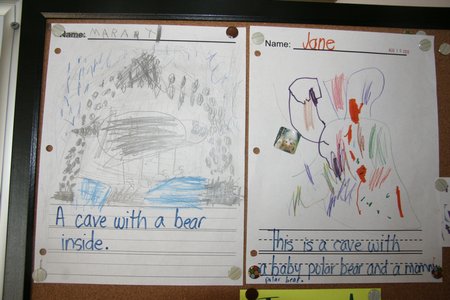
Children can experiment with letters, letter sounds, and inventive spelling in a safe way. When children are asked to de-code words (read) prematurely, they are regularly wrong. When they do kids spelling, they are in control and they experience success. They can read what they wrote and they build literacy confidence.
The journey of learning to read starts with the first scribble when children are just toddlers. Children then move to drawing with purpose (circles to drawing people and objects). They then start to understand that writing can be dictated to “tell” their story. Finally, children become ready to start their own kids spelling and begin to sound the words to tell their story them self. It is the Wee Friends teacher’s role to walk with them through this journey and help them when they are ready to learn to write their name, to record their dictated words, to help them start kids spelling when they are ready, and all the zillion steps in between!
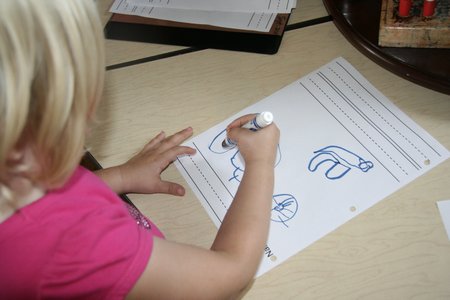
Writing gives children time to practice the fine motor control that will help them become better writers.
Yesterday’s blog gave several examples of ways that children develop fine motor skills other than writing. Often they need lots of other fine motor experiences to build the strength to write easily and with purpose. But, we foster a positive journaling culture that children want to be a part of. This means they get lots of time drawing and building the right fine motor muscles!
Have a great day,
Tami
Fill your paper with the breathings of your heart. ~William Wordsworth

Excellent analysis ! I Appreciate the points ! Does someone know where my company could possibly get access to a template a form copy to edit ?
Hi Muriel, I wrote this blog and I am not sure what you are requesting. This is my philosophy after 20 years of teaching early childhood put to paper for our families to better understand what we do.